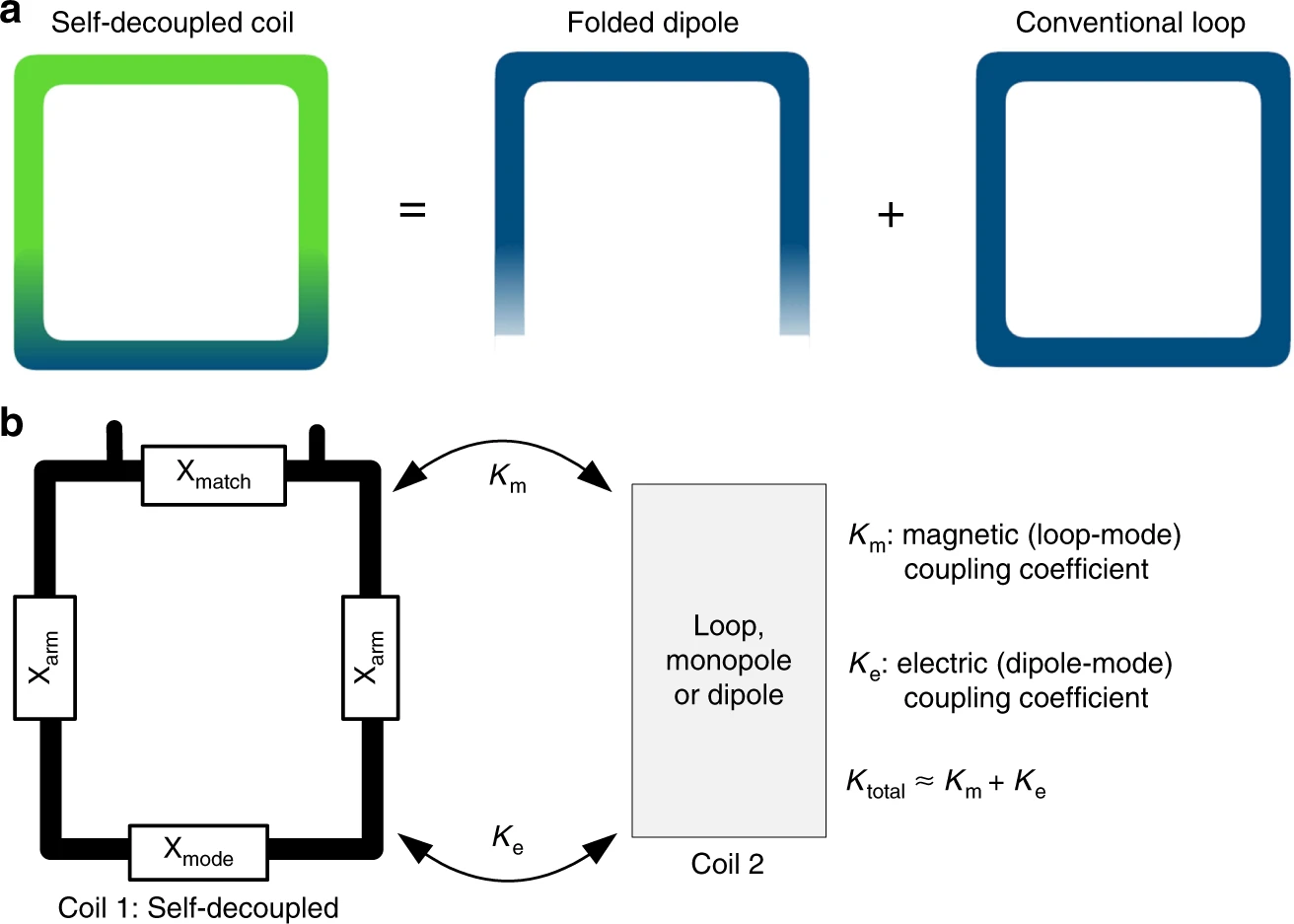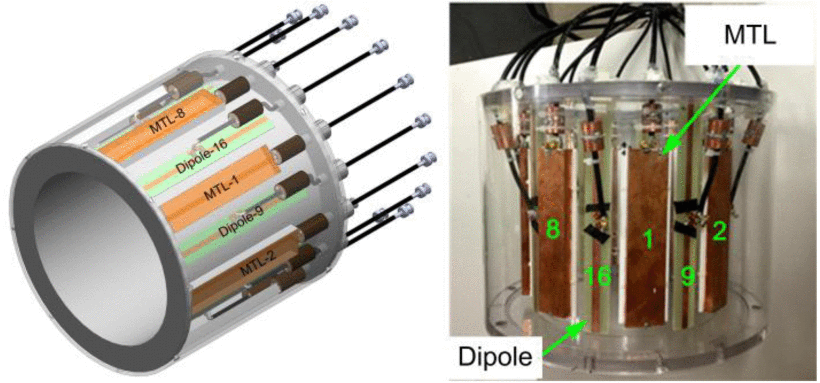RF Coils (transmitter and detector) for high field MRI



MRI scanners with high magnetic fields have advantages in high signal-to-noise ratio, image resolution, and improved image contrast. The static magnetic field at clinical scanners is typically 1.5 Tesla or 3 Telsa. VUIIS has a state-of-the-art 7T MRI scanner offers unique advantages in MRI imaging quality; it is the only one in; Tennessee. The Larmor frequency, however, increases with magnetic field strength, making the design of large-sized radio-frequency coils challenging. Unlike the clinical scanner, the 7T scanner lacks dedicated high-performance RF coils.
We have developed various types of coils or coils/antennas for 7T MRI, such as the loops, dipoles, and microstrip transmission lines. Meanwhile, we invented decoupling methods to solve the main challenges in designing array coils at ultrahigh field MRI, such as self-decoupling, the induced current elimination (ICE) method, interleaving elements, etc. Among them, self-decoupling is a groundbreaking way to realize high inter-element isolation by simply adjusting the capacitor distribution along loop resonators, which is widely used in microwave and MRI areas. The ICE decoupling, I proposed for a monopole or dipole antenna has proven to be the only practical method to decouple such antenna arrays.
These projects are to develop state-of-the-art coils with highly dense array designs. They require students to possess a strong background in CAD and PCB. While knowledge of RF and Microwave is an added advantage, it is not a prerequisite.
More details can be found in our publications:
https://www.nature.com/articles/s41467-018-05585-8
https://ieeexplore.ieee.org/abstract/document/6781623
https://link.springer.com/article/10.1007/s00723-014-0612-9
https://qims.amegroups.org/article/view/3727/4648
https://link.springer.com/article/10.1007/s00723-015-0656-5
https://ieeexplore.ieee.org/abstract/document/7044553
https://www.sciencedirect.com/science/article/pii/S1090780717300411